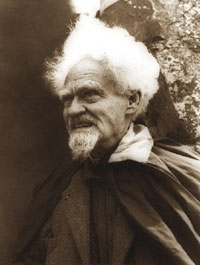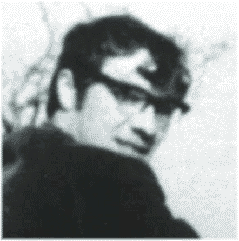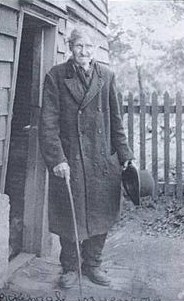The Charge of the Goddess is an inspirational text often used in the neopagan religion of Wicca. The Charge of the Goddess is recited during most rituals in which the Wiccan priest/priestess is expected to represent, and/or embody, the Goddess within the sacred circle, and is often spoken by the High Priest/Priestess after the ritual of Drawing Down the Moon.

Gardnerian Wicca, or Gardnerian witchcraft, is a tradition in the neopagan religion of Wicca, whose members can trace initiatory descent from Gerald Gardner. The tradition is itself named after Gardner (1884–1964), a British civil servant and amateur scholar of magic. The term "Gardnerian" was probably coined by the founder of Cochranian Witchcraft, Robert Cochrane in the 1950s or 60s, who himself left that tradition to found his own.

Gerald Brosseau Gardner, also known by the craft name Scire, was an English Wiccan, author, and amateur anthropologist and archaeologist. He was instrumental in bringing the modern pagan religion of Wicca to public attention, writing some of its definitive religious texts and founding the tradition of Gardnerian Wicca.

Wicca, also known as "The Craft", is a modern pagan, syncretic, earth-centered religion. Considered a new religious movement by scholars of religion, the path evolved from Western esotericism, developed in England during the first half of the 20th century, and was introduced to the public in 1954 by Gerald Gardner, a retired British civil servant. Wicca draws upon ancient pagan and 20th-century hermetic motifs for theological and ritual purposes. Doreen Valiente joined Gardner in the 1950s, further building Wicca's liturgical tradition of beliefs, principles, and practices, disseminated through published books as well as secret written and oral teachings passed along to initiates.
Dorothy Clutterbuck, was a wealthy Englishwoman who was named by Gerald Gardner as a leading member of the New Forest coven, a group of pagan Witches into which Gardner claimed to have been initiated in 1939. She has therefore become a figure of some significance in the history of Wicca.

Doreen Edith Dominy Valiente was an English Wiccan who was responsible for writing much of the early religious liturgy within the tradition of Gardnerian Wicca. An author and poet, she also published five books dealing with Wicca and related esoteric subjects.
Patricia Crowther who also goes by the craft name Thelema, is a British occultist considered influential in the early promotion of the Wiccan religion and she is the mother of the witch or wiccan runes.

Edith Rose Woodford-Grimes (1887–1975) was an English Wiccan who achieved recognition as one of the faith's earliest known adherents. She had been a member of the New Forest coven which met during the late 1930s and early 1940s, and through this became a friend and working partner of Gerald Gardner, who would go on to found the Gardnerian tradition with her help. Widely known under the nickname of Dafo, Woodford-Grimes' involvement in the Craft had largely been kept a secret until it was revealed in the late 1990s, and her role in the history of Wicca was subsequently investigated by historians.

The New Forest coven were an alleged group of pagan witches who met around the area of the New Forest in southern England during the early 20th century. According to his own claims, in September 1939, a British occultist named Gerald Gardner was initiated into the coven and subsequently used its beliefs and practices as a basis from which he formed the tradition of Gardnerian Wicca. Gardner described some of his experiences with the coven in his published books Witchcraft Today (1954) and The Meaning of Witchcraft (1959) although on the whole revealed little about it, saying he was respecting the privacy of its members. Meanwhile, another occultist, Louis Wilkinson, corroborated Gardner's claims by revealing in an interview with the writer Francis X. King that he too had encountered the coven and expanded on some of the information that Gardner had provided about them. According to Gardner, the faith they followed was the Witch-Cult, a supposed pagan religion that had survived in secret after the Christianization of Europe. This was in keeping with the now-discredited theories of Margaret Murray and her supporters.

A craft name, also referred to as a magical name, is a secondary religious name often adopted by practitioners of Wicca and other forms of Neopagan witchcraft or magic. Craft names may be adopted as a means of protecting one's privacy, as an expression of religious devotion, or as a part of an initiation ritual. It may also be used as a protective method, as it is believed by some that one's "true name" can be used to identify that person for the purpose of magical activities.

Robert Cochrane, who was born as Roy Bowers, was an English occultist who founded the tradition of Witchcraft known as The Clan of Tubal Cain.
The history of Wicca documents the rise of the Neopagan religion of Wicca and related witchcraft-based Neopagan religions. Wicca originated in the early 20th century, when it developed amongst secretive covens in England who were basing their religious beliefs and practices upon what they read of the historical witch-cult in the works of such writers as Margaret Murray. It also is based on the beliefs from the magic that Gerald Gardner saw when he was in India. It was subsequently founded in the 1950s by Gardner, who claimed to have been initiated into the Craft – as Wicca is often known – by the New Forest coven in 1939. Gardner's form of Wicca, the Gardnerian tradition, was spread by both him and his followers like the High Priestesses Doreen Valiente, Patricia Crowther and Eleanor Bone into other parts of the British Isles, and also into other, predominantly English-speaking, countries across the world. In the 1960s, new figures arose in Britain who popularized their own forms of the religion, including Robert Cochrane, Sybil Leek and Alex Sanders, and organizations began to be formed to propagate it, such as the Witchcraft Research Association. It was during this decade that the faith was transported to the United States, where it was further adapted into new traditions such as Feri, 1734 and Dianic Wicca in the ensuing decades, and where organizations such as the Covenant of the Goddess were formed.

George Pickingill was an English farm labourer who lived and worked in the village of Canewdon in the eastern English county of Essex. Widely considered to be a cunning man, or vocational folk magician, he reportedly employed magical means to offer cures for ailments and to locate lost property, although was also alleged to have threatened to place curses on people.

Neopagan witchcraft, sometimes referred to as The Craft, is an umbrella term for some neo-pagan traditions that include the practice of magic. These traditions began in the mid-20th century, and many were influenced by the witch-cult hypothesis; a now-rejected theory that persecuted witches in Europe had actually been followers of a surviving pagan religion. The largest and most influential of these movements was Wicca. Some other groups and movements describe themselves as "Traditional Witchcraft" to distinguish themselves from Wicca.

Raymond Howard was an English practitioner of the modern Pagan new religious movement of Wicca. He promoted his tradition, known as the Coven of Atho, through a correspondence course established in the early part of the 1960s.
The Witchcraft Research Association was a British organisation formed in 1964 in an attempt to unite and study the various claims that had emerged of surviving remnants of the so-called Witch-Cult, such as those of Gerald Gardner, Robert Cochrane, Sybil Leek, Charles Cardell, and Raymond Howard.
In Modern English, the term Wicca refers to Wicca, the religion of contemporary Pagan witchcraft. It is used within the Pagan community under competing definitions. One refers to the entirety of the Pagan Witchcraft movement, while the other refers explicitly to traditions included in what is now called British Traditional Wicca.

Madeline Montalban was an English astrologer and ceremonial magician. She co-founded the esoteric organisation known as the Order of the Morning Star (OMS), through which she propagated her own form of Luciferianism.

Evan John Jones (1936–2003) was an English traditional witch, occultist and writer who operated within the tradition of Cochrane's Craft.

Michael Howard (1948–2015) was an English practitioner of Luciferian witchcraft and a prolific author on esoteric topics. From 1976 until his death he was the editor of The Cauldron magazine.















